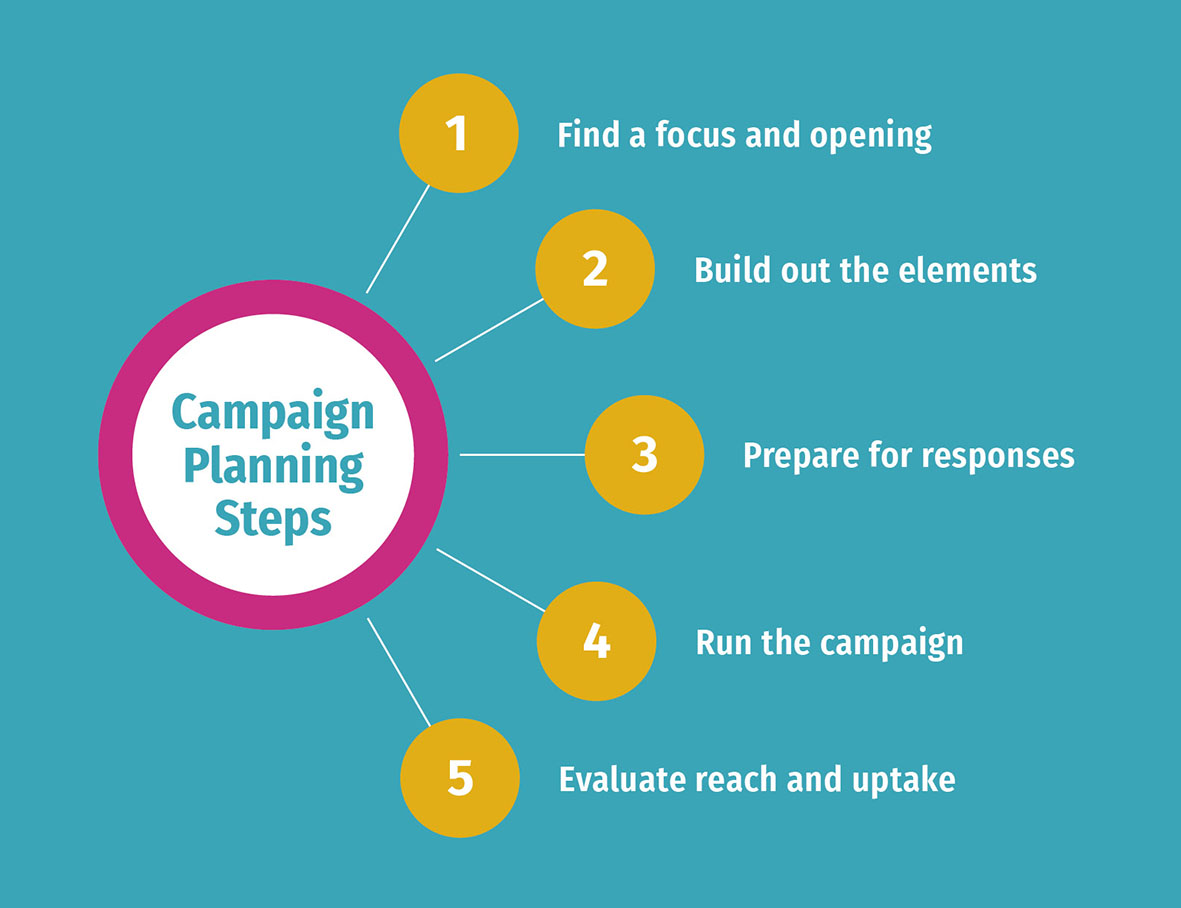Step 5. Evaluate Reach & Uptake
After the campaign roll out in the last step, we now come to the final step of the narrative change planning process, closing with campaign evaluation.

Figure 1: 5-step narrative change campaign planning process
Through the first four steps of the process, you should have completed the following:
- put together a strategy, materials and a plan to effectively engage the middle in the debate on migration;
- prepared the campaign team so they are ready to engage in challenging exchanges;
- rolled out the campaign, dealt with responses and monitored the campaign results.
Now, as is the case in any focused project management approach, we get to the evaluation step which involves the following:
|
Elements
|
Details
|
|
| 1. | Develop an evaluation design | Flesh out the methods you will use to measure the reach, response and uptake of the campaign |
| 2. | Collect the data, share and reflect | Generate an action plan for data collection, analysis and reporting on the campaign |
There is significant questioning of the efficacy of narrative change campaigns, so it becomes even more important for your organisation/coalition and your supporters to see whether and how the campaign influenced the public narrative in the target debate within your target segments. Not only will the evaluation serve to demonstrate the value of the campaign to partners, there are also significant learnings for the campaigning organisation(s). This includes having an evidence base and set of reflections to provide valuable lessons for subsequent campaigns, give validity for your investment of resources, provide motivation for the team to build on the experience and hopefully leverage the positive contribution the campaign has made.
In our policy advocacy support for campaigners, we emphasise how important it is to take the ‘small victories’ and to take credit where credit is due. The same applies to such public advocacy work and this can only be done through measuring the impact of the campaign through sound evaluation. And this is crucially important, given that narrative change is a longer-term endeavour than one campaign and sustained energy and efforts are required by persistent engaged campaigners. This section focuses on providing big picture thinking and practical guidance on the target evaluation levels to be measured and practical suggestions of how to do this.